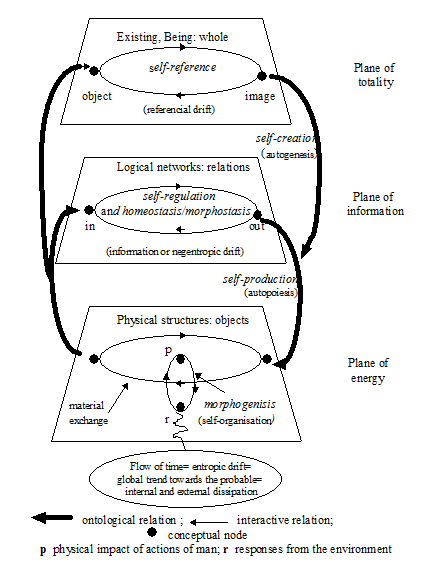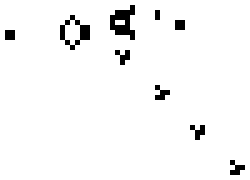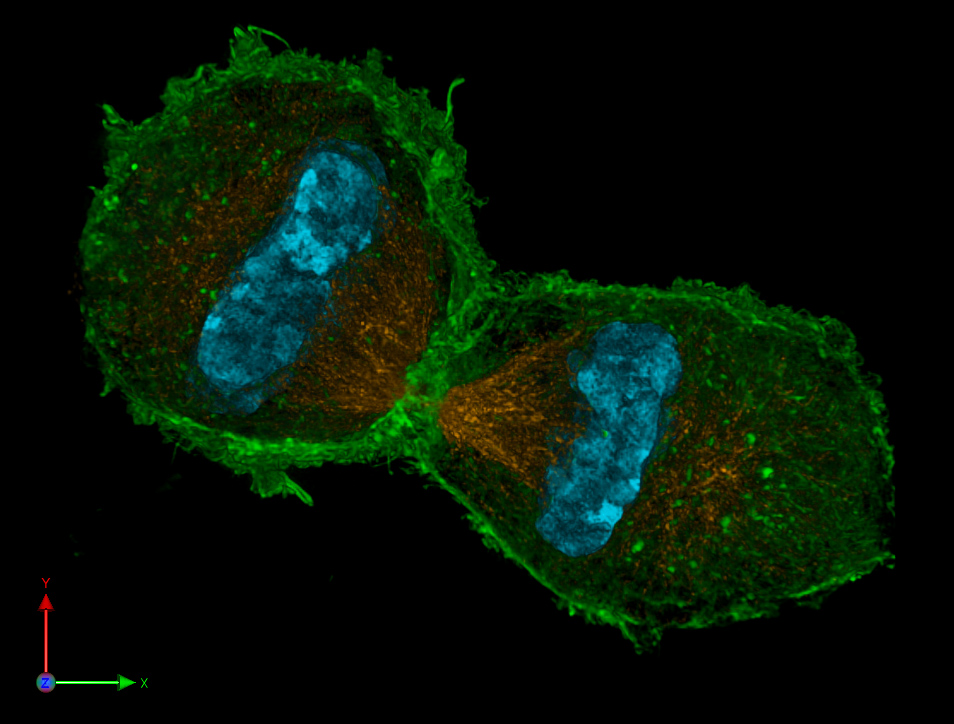|
Viable System Theory
Viable system theory (VST) concerns cybernetic processes in relation to the development/evolution of dynamical systems: it can be used to explain living systems, which are considered to be complex and adaptive, can learn, and are capable of maintaining an autonomous existence, at least within the confines of their constraints. These attributes involve the maintenance of internal stability through adaptation to changing environments. One can distinguish between two strands such theory: formal systems and principally non-formal system. Formal viable system theory is normally referred to as viability theory, and provides a mathematical approach to explore the dynamics of complex systems set within the context of control theory. In contrast, principally non-formal viable system theory is concerned with descriptive approaches to the study of viability through the processes of control and communication, though these theories may have mathematical descriptions associated with them. H ... [...More Info...] [...Related Items...] OR: [Wikipedia] [Google] [Baidu] |
Cybernetic
Cybernetics is the transdisciplinary study of circular causal processes such as feedback and recursion, where the effects of a system's actions (its outputs) return as inputs to that system, influencing subsequent action. It is concerned with general principles that are relevant across multiple contexts, including in engineering, ecological, economic, biological, cognitive and social systems and also in practical activities such as designing, learning, and managing. Cybernetics' transdisciplinary character has meant that it intersects with a number of other fields, leading to it having both wide influence and diverse interpretations. The field is named after an example of circular causal feedback—that of steering a ship (the ancient Greek κυβερνήτης (''kybernḗtēs'') refers to the person who steers a ship). In steering a ship, the position of the rudder is adjusted in continual response to the effect it is observed as having, forming a feedback loop through whi ... [...More Info...] [...Related Items...] OR: [Wikipedia] [Google] [Baidu] |
Complex Systems
A complex system is a system composed of many components that may interact with one another. Examples of complex systems are Earth's global climate, organisms, the human brain, infrastructure such as power grid, transportation or communication systems, complex software and electronic systems, social and economic organizations (like cities), an ecosystem, a living cell, and, ultimately, for some authors, the entire universe. The behavior of a complex system is intrinsically difficult to model due to the dependencies, competitions, relationships, and other types of interactions between their parts or between a given system and its environment. Systems that are " complex" have distinct properties that arise from these relationships, such as nonlinearity, emergence, spontaneous order, adaptation, and feedback loops, among others. Because such systems appear in a wide variety of fields, the commonalities among them have become the topic of their independent area of research. In ... [...More Info...] [...Related Items...] OR: [Wikipedia] [Google] [Baidu] |
Potential Energy
In physics, potential energy is the energy of an object or system due to the body's position relative to other objects, or the configuration of its particles. The energy is equal to the work done against any restoring forces, such as gravity or those in a spring. The term ''potential energy'' was introduced by the 19th-century Scottish engineer and physicist William Rankine, although it has links to the ancient Greek philosopher Aristotle's concept of Potentiality and Actuality, ''potentiality''. Common types of potential energy include gravitational potential energy, the elastic potential energy of a deformed spring, and the electric potential energy of an electric charge and an electric field. The unit for energy in the International System of Units (SI) is the joule (symbol J). Potential energy is associated with forces that act on a body in a way that the total Work (physics), work done by these forces on the body depends only on the initial and final positions of the b ... [...More Info...] [...Related Items...] OR: [Wikipedia] [Google] [Baidu] |
Kinetic Energy
In physics, the kinetic energy of an object is the form of energy that it possesses due to its motion. In classical mechanics, the kinetic energy of a non-rotating object of mass ''m'' traveling at a speed ''v'' is \fracmv^2.Resnick, Robert and Halliday, David (1960) ''Physics'', Section 7-5, Wiley International Edition The kinetic energy of an object is equal to the work, or force ( F) in the direction of motion times its displacement ( s), needed to accelerate the object from rest to its given speed. The same amount of work is done by the object when decelerating from its current speed to a state of rest. The SI unit of energy is the joule, while the English unit of energy is the foot-pound. In relativistic mechanics, \fracmv^2 is a good approximation of kinetic energy only when ''v'' is much less than the speed of light. History and etymology The adjective ''kinetic'' has its roots in the Greek word κίνησις ''kinesis'', meaning "motion". The dichoto ... [...More Info...] [...Related Items...] OR: [Wikipedia] [Google] [Baidu] |
Energy
Energy () is the physical quantity, quantitative physical property, property that is transferred to a physical body, body or to a physical system, recognizable in the performance of Work (thermodynamics), work and in the form of heat and light. Energy is a Conservation law, conserved quantity—the law of conservation of energy states that energy can be Energy transformation, converted in form, but not created or destroyed. The unit of measurement for energy in the International System of Units (SI) is the joule (J). Forms of energy include the kinetic energy of a moving object, the potential energy stored by an object (for instance due to its position in a Classical field theory, field), the elastic energy stored in a solid object, chemical energy associated with chemical reactions, the radiant energy carried by electromagnetic radiation, the internal energy contained within a thermodynamic system, and rest energy associated with an object's rest mass. These are not mutual ... [...More Info...] [...Related Items...] OR: [Wikipedia] [Google] [Baidu] |
Systems
A system is a group of interacting or interrelated elements that act according to a set of rules to form a unified whole. A system, surrounded and influenced by its environment, is described by its boundaries, structure and purpose and is expressed in its functioning. Systems are the subjects of study of systems theory and other systems sciences. Systems have several common properties and characteristics, including structure, function(s), behavior and interconnectivity. Etymology The term ''system'' comes from the Latin word ''systēma'', in turn from Greek ''systēma'': "whole concept made of several parts or members, system", literary "composition"."σύστημα" , Henry George Liddell, Robert Scott, '' |
Dissipative System
A dissipative system is a thermodynamically open system which is operating out of, and often far from, thermodynamic equilibrium in an environment with which it exchanges energy and matter. A tornado may be thought of as a dissipative system. Dissipative systems stand in contrast to conservative systems. A dissipative structure is a dissipative system that has a dynamical regime that is in some sense in a reproducible steady state. This reproducible steady state may be reached by natural evolution of the system, by artifice, or by a combination of these two. Overview A dissipative structure is characterized by the spontaneous appearance of symmetry breaking (anisotropy) and the formation of complex, sometimes chaotic, structures where interacting particles exhibit long range correlations. Examples in everyday life include convection, turbulent flow, cyclones, hurricanes and living organisms. Less common examples include lasers, Bénard cells, droplet cluster, and the ... [...More Info...] [...Related Items...] OR: [Wikipedia] [Google] [Baidu] |
Autopoiesis
The term autopoiesis (), one of several current theories of life, refers to a system capable of producing and maintaining itself by creating its own parts. The term was introduced in the 1972 publication '' Autopoiesis and Cognition: The Realization of the Living'' by Chilean biologists Humberto Maturana and Francisco Varela to define the self-maintaining chemistry of living cells. The concept has since been applied to the fields of cognition, neurobiology, systems theory, architecture and sociology. Niklas Luhmann briefly introduced the concept of autopoiesis to organizational theory. Overview In their 1972 book ''Autopoiesis and Cognition'', Chilean biologists Maturana and Varela described how they invented the word autopoiesis. They explained that, They described the "space defined by an autopoietic system" as "self-contained", a space that "cannot be described by using dimensions that define another space. When we refer to our interactions with a concrete autopoieti ... [...More Info...] [...Related Items...] OR: [Wikipedia] [Google] [Baidu] |
Humberto Maturana
Humberto Maturana Romesín (September 14, 1928 – May 6, 2021) was a Chilean biologist and philosopher. Some name him a second-order cybernetics theoretician alongside the likes of Heinz von Foerster, Gordon Pask, Herbert Brün and Ernst von Glasersfeld. Maturana, along with Francisco Varela and Ricardo B. Uribe, was known for creating the term "autopoiesis" about the self-generating, self-maintaining structure in living systems, and concepts such as structural determinism and structural coupling. His work was influential in many fields, mainly the field of systems thinking and cybernetics. Overall, his work is concerned with the biology of cognition.Magnus Ramage, Karen Shipp (2012) ''Systems Thinkers'' Maturana (2002) insisted that autopoiesis exists only in the molecular domain, and he did not agree with the extension into sociology and other fields: The molecular domain is the only domain of entities that through their interactions give rise to an open ended dive ... [...More Info...] [...Related Items...] OR: [Wikipedia] [Google] [Baidu] |
Ontologically
Ontology is the philosophical study of being. It is traditionally understood as the subdiscipline of metaphysics focused on the most general features of reality. As one of the most fundamental concepts, being encompasses all of reality and every entity within it. To articulate the basic structure of being, ontology examines the commonalities among all things and investigates their classification into basic types, such as the categories of particulars and universals. Particulars are unique, non-repeatable entities, such as the person Socrates, whereas universals are general, repeatable entities, like the color ''green''. Another distinction exists between concrete objects existing in space and time, such as a tree, and abstract objects existing outside space and time, like the number 7. Systems of categories aim to provide a comprehensive inventory of reality by employing categories such as substance, property, relation, state of affairs, and event. Ontologists disagree r ... [...More Info...] [...Related Items...] OR: [Wikipedia] [Google] [Baidu] |
Behaviour
Behavior (American English) or behaviour (British English) is the range of actions of Individual, individuals, organisms, systems or Artificial intelligence, artificial entities in some environment. These systems can include other systems or organisms as well as the inanimate physical environment. It is the computed response of the system or organism to various stimuli or inputs, whether internal or external, conscious or subconscious, overt or covert, and voluntary action, voluntary or Volition (psychology), involuntary. While some behavior is produced in response to an organism's environment (extrinsic motivation), behavior can also be the product of intrinsic motivation, also referred to as "agency" or "free will". Taking a behavior informatics perspective, a behavior consists of actor, operation, interactions, and their properties. This can be represented as a behavior Euclidean vector, vector. Models Biology Definition Behavior may be defined as "the internally coordin ... [...More Info...] [...Related Items...] OR: [Wikipedia] [Google] [Baidu] |
Communications
Communication is commonly defined as the transmission of information. Its precise definition is disputed and there are disagreements about whether Intention, unintentional or failed transmissions are included and whether communication not only transmits semantics, meaning but also creates it. Models of communication are simplified overviews of its main components and their interactions. Many models include the idea that a source uses a code, coding system to express information in the form of a message. The message is sent through a Communication channel, channel to a receiver who has to decode it to understand it. The main field of inquiry investigating communication is called communication studies. A common way to classify communication is by whether information is exchanged between humans, members of other species, or non-living entities such as computers. For human communication, a central contrast is between Verbal communication, verbal and non-verbal communication. Verba ... [...More Info...] [...Related Items...] OR: [Wikipedia] [Google] [Baidu] |







